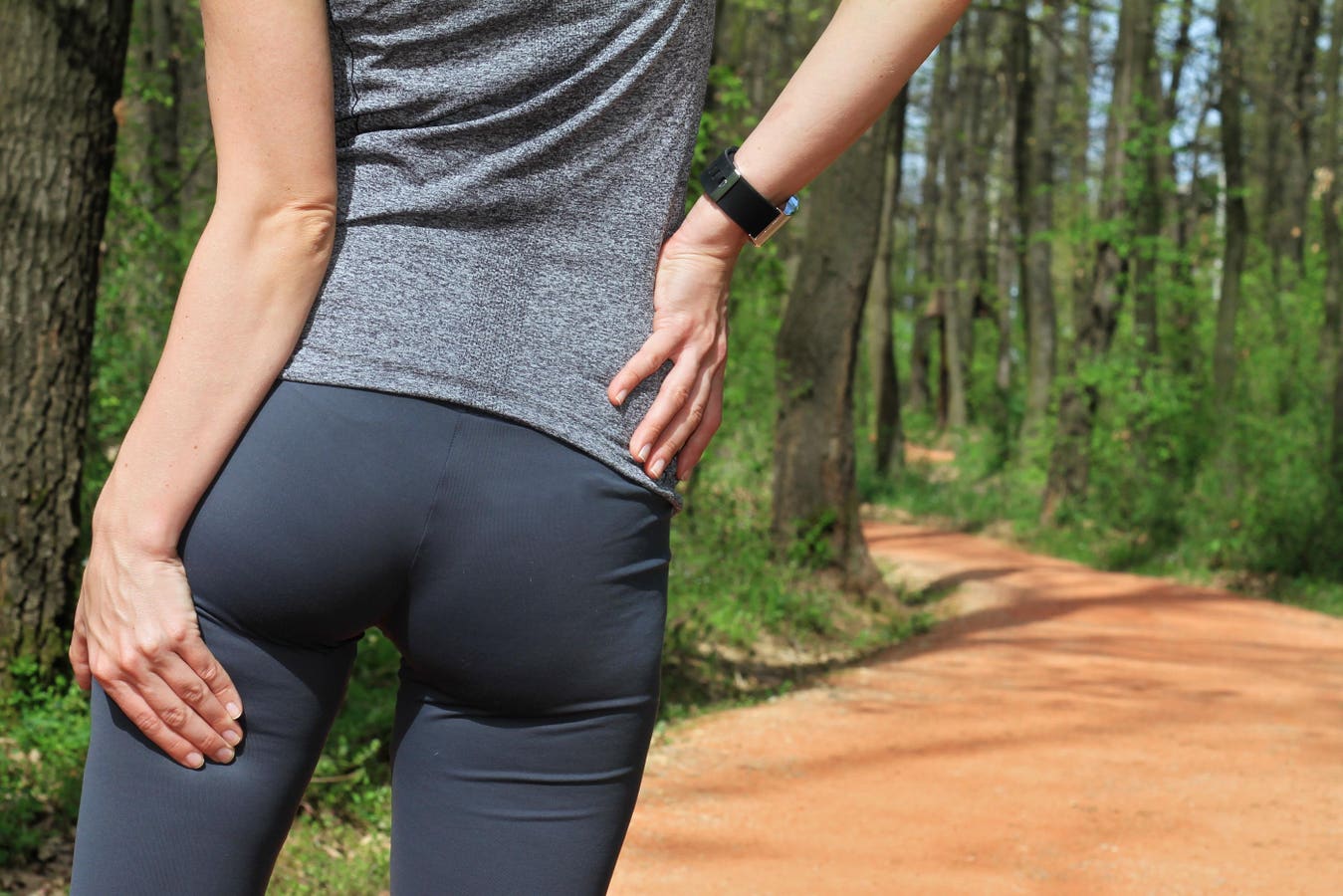It’s a rather cheeky nickname but “dead butt syndrome” is a real thing. And it can cause real problems. No ifs, ands or buts about that.
“Dead butt syndrome” is the nickname for gluteal amnesia. Your glutes—in case you’ve forgotten about them—are the three muscles that make up your buttocks, booty, badonkadonk, trouble-maker or whatever you call your back side. They consist of the the gluteus minimus, the gluteus medius, and the biggest one of them all, the gluteus maximus.
Gluteal amnesia is when your glutes basically forget what they are supposed to do. Such a condition can arise after you’ve spent a lot of time sitting around not using your glutes. And a result your glutes have become deconditioned.
You see your gluteal muscles are like any muscles. If you don’t use them, you essentially lose ‘em. They basically weaken and atrophy. This ain’t good because butt muscles do play important roles, besides giving you the junk in your trunk and Kim Kardashian a lot of her oomph. Your gluteal muscles help stabilize your spine, trunk, hips and pelvis.
Without your gluteal muscles working as they should, the joints and other muscles in your lower back, hips and lower extremities have to compensate and bear more of the brunt. This is kind of like when the middle manager doesn’t do his or her job and everyone else has to work extra hard all the time. This can end up putting too much stress and strain on your spine, hamstring and hip adductor muscles, knees and even your ankles.
The eventual result can be a whole host of injuries that may at first glance not seem related to your butt—but in the end are. These include ankle sprains, anterior cruciate ligament injuries, hamstring strains, low back problems, femoroacetabular impingement and balance problems. Heck, gluteal amnesia over time could even lead to hip joint wear and tear that’s so bad that a hip replacement is eventually needed.
The trouble is gluteal amnesia doesn’t tend to manifest early on as a pain in the butt literally even though it will eventually become a pain in the butt figuratively. Chances are you won’t even notice your dead butt unless you are looking for it. Gluteal amnesia may or may not result in soreness or numbness in your butt. Often the dead butt is only recognized in hindsight, so to speak, after lower back, hip, knee, ankle or other leg problems have emerged. In fact, you may not even think about your butt until irreparable damage to other parts of your body have already long occurred.
So, the key is to watch your butt and get your butt in gear, keeping your glutes working hard and, well, hard. Since it can take twice as long to build your glutes back up as it does for them atrophy, it is better to not let them get to the “who am I” and what do I do” stage in the first place.
Of course, one clear risk factor of dead butt syndrome is sitting on your butt all day. So, try to build in times throughout your time awake when you stand up and move your a#%#%. You can set a timer or build stretching and moving around into the beginning of every meeting, including those on Zoom. Convert sitting activities into standing or walking ones. This can be done via using a standing desk, ditching the car ride for a more active way of commuting and having standing meetings. All the while, remember the number 20—as in every 20 minutes. That’s the frequency at which you should be moving around.
Now, assuming that you don’t regularly twerk everyday, you’re likely underutilizing your glutes in general. You also want to keep activating and strengthening your glutes. The simplest exercise is doing glute squeezes. This is where you alternate between contracting and relaxing your glutes. To make sure that you are indeed using your glutes, grab your butt and feel whether it gets harder when you are trying to squeeze your glutes. Of course, do this discretely and don’t make funny noises and expressions when doing this where others can see.
There are a number of weight-bearing exercises that can strengthen your glutes. These include squats, where you bend you legs and lower your hips, as demonstrated in the following photo:
You also do lunges, which entail stepping one foot forward or one foot backward like this:
Ot step-ups with or without knee raises:
In all of these, you are contracting your glutes against some kind of force whether it’s just gravity and your body weight or weight such as dumbbells that you are carrying. In all cases, it’s important to use proper form. Otherwise, you may put too much pressure on other parts of your body such as your back and knees and not really work your glutes.
You can do different non-weight bearing glute exercises as well. For example, you can do bridges in different in various ways. All of these variation consist of lying on the floor face up and then squeezing your glutes to lift your hips straight up towards the ceiling as can be seen in the following photo:
After holding this position for a short time, you then lower your hips back to the ground and then repeat this cycle of lowering and raising your hips. Here is a one-legged variation of the glute bridge:
You can also do bird-dogs, which have nothing to do with the animals or eating. Instead, bird-dogs entail first going on your hands and knees and then alternating extending your right arm and left leg with extending your left arm and right leg simultaneously as shown here:
There are other exercises like clams and rainbow taps as well.
These glute exercises can also help treat dead butt syndrome after it has already occurred. Depending on how much your glutes may have forgotten, you may need physical therapy to make sure that your regimen is aggressive enough.
At the same time, it will be important to deactivate and relax the muscles that have been overused to support the lack of glute action. So, you will want to regularly stretch, roll out and strengthen your hamstrings and hip adductor muscles. As with the glute exercises, make sure you use proper form. And don’t launch right into any exercises without stretching first, especially if you’ve been sitting for a while.
All of this should convince you to maintain your rear view mirror. Always pay attention to your butt. When standing up or lifting things, make sure that your glutes are activated and squeezing. You may have heard of the term save your butt. But it’s your butt that can end up saving other parts of your body.
Read the full article here





